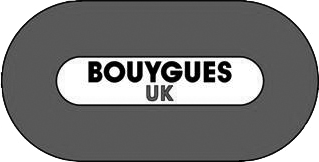Company Milestones
January 2000 – Company formed of technical experts in new market concept.
January 2001 – First major screw pile project in the UK completed for Scottish power.
Spring 2002 – New technology introduced to the rail market taking just 90 mins per base foundation (thousands of similar bases will be adopted as standard to market)
June 2002 – ISO 9000 accreditation gained
September 2002 – Screw pile foundations adopted by the telecoms market.
August 2003 – ScrewFast file patent for the ‘Grout Box’ grillage connection, which protects vital hardware from corrosion.
January 2003 – Company moves to St. Albans in Hertfordshire and continues to grow
February 2004 – ScrewFast Foundations Ltd’s market leading Angel Pile® design approved
August 2005 – ScrewFast Foundations Ltd presented the “Queens award for enterprise”
March 2006 – Builds major road project CCTV infrastructure with partner Carillion on M621
January 2007 – ScrewFast Foundations Ltd designs a highly technical solution to enter the Spanish solar PV market
Summer 2007 – Gains project for Cambridge guided bus way
May 2008 – ScrewFast Foundations Ltd wins Birmingham boxed managed motorway project work
November 2009 – Major work secured on M25 widening
Spring 2010 – Tesco supermarket on the Isle of Wight is built on ScrewFast Foundations Ltd piles
January 2011 – Screwfast designed, supplied and installed piles for the Water Polo Arena for the London 2012 Olympic Games
May 2011 – One of the largest bridges built on a floating platform is constructed on ScrewFast Foundations Ltd piles, for the Latitude Festival
July 2012 – ScrewFast Foundations Ltd’s key to Olympic success by designing bespoke pile solution for temporary seating at Eton Dorney and various locations throughout the Olympics Park, including a 12,000 seat arena at Lee Valley.
September 2012 – ScrewFast Foundations completed the first of two marine piling projects at Walton Eel, Walton on Thames.
May 2015 – SSIP Accreditation is awarded to ScrewFast
June 2015 – Highways project on the M1 between J28 – 31 is complete using ScrewFast Foundation solutions.
June 2015 – Screwpiles are installed on Substation projects at Bolney, Twineham and Puddingmill Lane
August 2015 – ScrewFast install foundations on another M1 project between J39-42.
May 2016 – A further M1 highways project is complete using screwpile foundations between J32 -35a.
May 2017 – The Crossrail project begin using ScrewFast Foundations at Custom House, Westbourne Park.
June 2017 – ScrewFast Foundations install at Craigentinny Rail Depot in Scotland
August 2017 – Screwpiles are used to help install Leeds Flood Defence system.
September 2017 – A high security, restricted access project is complete using screwpiles at HMP PVL
January 2018 – Helical piles are installed at Johnstone, Glasgow
January 2018 – Dormay St project is complete using helical piles, due to restricted access and underground services.
January 2018 – ScrewFast Foundations announce Diversification into other piling types as part of 3 Year Strategy Plan
April 2018 – ScrewFast achieve its ISO 9001:2015 accreditation
October 2018 – ScrewFast Foundations are called in at short notice to install a retaining wall at the Porth railway landslide.
April 2019 – Contract is Award to ScrewFast Foundations for Tokyo, Japan 2020 Olympics (international project)
April 2021 – Acquired by Van Elle Group
The History of Helical Piling
In 1833 Alexander Mitchell, a blind Civil Engineer from Ireland, invented the Helical Pile. He won the Telford Medal for his creation. The first recorded use of helical piles was in 1836 for river moorings for ships.
Helical Piles
The secure steel situated with low fitted steel plates welded around the base, resembles the shape of the small household screws used in DIY construction, and mirrors their capacity to stabilise objects through tension and compression. The design has been shown to secure structures such as highway foundations and marine piers, replacing the concrete foundations that were previous used to anchor these engineering structures in place. Helical Piles are installed with powerful drilling equipment that is either machine mounted hydraulic or electrically powered. The piles are connected using steel grillage.
In 1838 the new technology was used to create foundations for Maplin Sands Lighthouse in the Thames estuary, the system consisting of 30 piles to a depth of 23 metres. In 1863 Brighton Pier was built upon helical piles, remaining on the same foundations for 138 years. The technique was then used intermittently for projects in the UK, the majority of which being marine-based.
ScrewFast Foundations Ltd Reintroduces Helical Piling
In 2000 ScrewFast Foundations Ltd reintroduced the technique initially used for telecommunication towers, as a solution in locations where concrete foundations were not viable. It wasn’t long before the transport sector realised how efficient and easy to install this technique was, and the significance that this would have on other projects. It quickly became the option of preference for Network rail and the Highways Agency.
Helical Piling Today
Steel-based foundations (helical piles and driven piling) have increased in popularity and are now recognised and accepted as a preferred option for the majority of the infrastructure markets.



























